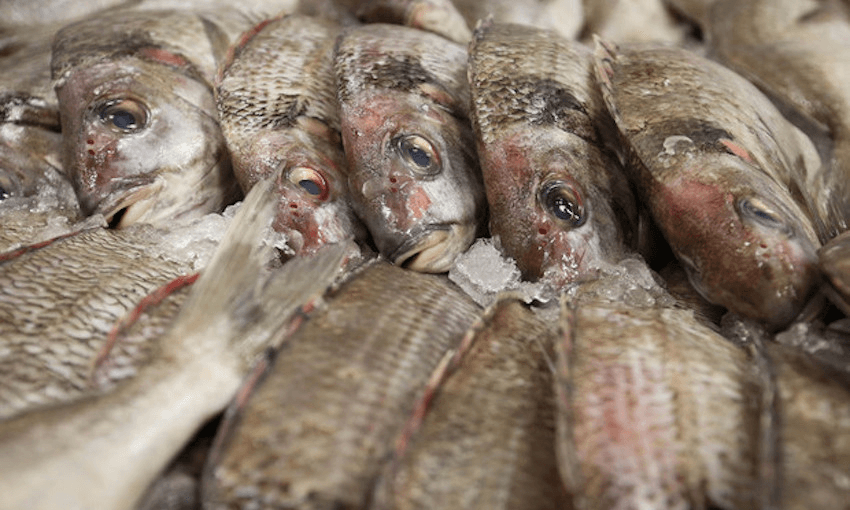We love it battered and served with chips, but tarakihi stocks aren’t doing well and another big cut to commercial catch limits is in the works.
Ah yes, terrakee, that’s a fish, right?
Well, first things first, let’s say it correctly. Pronounce every syllable, remember the Māori vowel sounds (A-E-I-O-U), roll the r and you’ll be sweet. Check out Stacey Morrison and Anne Thorp nailing it here – recipe looks yum too (but yeah, maybe try it with another species…)
(NB: Today I learnt that tarakihi is also the Māori word for cicada, and there’s a rousing waiata about it that will now be in my head for days.)
Right…
Sorry, back to the matter at hand. Nemadactylus macropterus, AKA tarakihi, AKA jackass morwong (seriously). These silvery-coloured fishies, with a distinctive black band between the head and the dorsal fin, are found mostly south of East Cape, through Cook Strait and around the South Island, and with their moist, medium to firm white flesh, they’re one of the most popular species in New Zealand among both commercial and recreational fishers – not to mention fans of fish and chips. I have strong childhood memories of reeling in tarakihi after tarakihi with my dad off the coast of Mākara in Wellington in the 90s, more often than not in a bitter southerly.
Sounds fun AND delicious. What’s the problem then?
Their numbers have dropped to worrying levels, that’s what, particularly along the east coast of the country, where about 80% of the commercial catch has been taken from over the past decades. An east coast stock assessment last year found that tarakihi numbers had gone beneath what’s known as the “soft limit”, 20% of the pre-fishing biomass (using a theoretical starting point of 100% where tarakihi were not impacted at all by fishing). Once stocks are below that point, MPI considers them to be overfished and a rebuild plan must be developed. Tarakihi stock on the east coast is down to just under 16%.
Ah. Has anything been done?
In September 2018, fisheries minister Stuart Nash announced a 20% cut to the commercial catch, and suggested there would be further cuts in 2019 unless the fishing industry made significant changes. Earlier this month, RNZ reported that a proposal to cut the catch by a further 31% is currently being considered by the ministry. Both Forest & Bird, the conservation organisation that publishes the Best Fish Guide, and recreational fishers’ body LegaSea are calling for a 40% cut.
Hmm. What do other interested parties say?
Dr Jeremy Helson, chief executive of Fisheries Inshore New Zealand, which supported last year’s cut, told RNZ the stock was not in crisis and said the proposed 31% reduction would be detrimental to the industry. Christchurch fish and chip shop Fush has taken tarakihi off the menu. It’s still available at plenty of other joints though.
So should I stop eating it?
That’s a conclusion you need to come to on your own, my friend. But remember, New Zealanders (or at least Pākehā New Zealanders) are traditionally very conservative when it comes to what fish they eat. Things are improving, but many people still turn up their noses at species like kahawai and trevally, and mackerel, piper, pilchards and the like, which are hugely popular overseas, don’t get much love here. So branch out a bit and try something new. Also, when you’re buying fish from a retailer or in a restaurant or fish and chip shop, don’t be scared to ask them who supplied it and how it was caught – if they don’t know, tell them they should.

